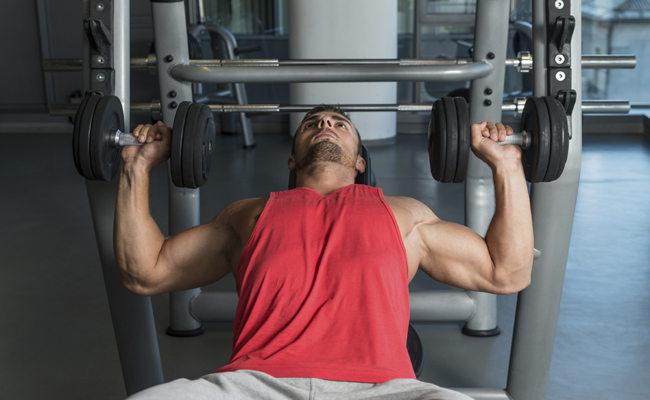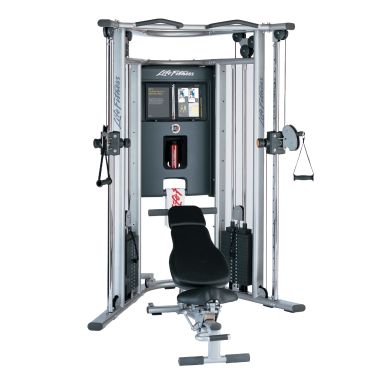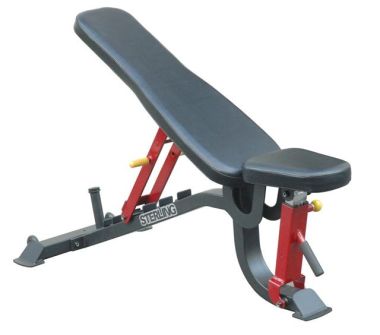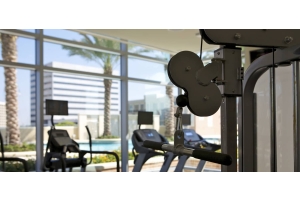How Can I Work My Pecs?

Your chest includes some of the largest muscle groups in the upper body. The larger the muscle group, the more weight it can handle. However, be careful not to over train in your desire to build that powerful chest.
We recently sat down with personal trainer Michael Bennett from Equinox gym in London to find out what questions clients ask him most frequently. He told me the number one question his male clients ask is how they can work (and grow!) their pecs.
Understand Your Chest Structure
Firstly, for workout novices, your pectorals (aka pecs) are your chest muscles. Located under the breast area in both men and women, they begin at your sternum and connect to a tendon that attaches to the humeris bone in your upper arm. Pectoral muscles contribute to most arm and shoulder movements, including adductions, (bringing your arms together in front of you) flexions, (lifting your arms in front of you) and medial rotations (turning your arms inwards). So when performing exercises that target your pecs, these are the movements you want to focus on.
If you work your chest muscles too hard, they will break down instead of repairing themselves. This will leave you with smaller and weaker muscles. Bennett recommends performing chest exercises on no more than two to three non-consecutive days a week.
Many people express frustration with their inability to grow their pecs. But don’t worry; we’ve got you covered. Try training your pecs by following our guide of hardcore techniques, intended to spark muscle growth in your chest and really make your muscles ‘pop’.
Number 1 - Bench Press
The bench press is one of the most popular chest building exercises around.
How to Perform
Start by lying flat on the bench with your feet flat on the floor and your body in a relaxed position. Holding a barbell with a wide grip, lower it down to about 2cm above your chest then lift it straight up.
Bennett recommends doing between 8-10 reps, 3 times through.
Michael's advice:
“The bench press is the most stable version of training for pec exercises and allows you to lift a larger amount of weight than you normally would,” says Bennett.
Number 2 - Incline / Decline Bench Press
Bench presses can also be preformed on an incline or decline by using an inclined or declined bench.
The movement is the same, but different parts of your pectoral muscles are being targeted - your upper pecs are worked when on an incline, and your lower pecs are worked when on a decline.
Michael's advice:
“A number of great chest exercises can be preformed using the bench and barbell including barbell flies, incline flies and decline flies. These can all be done bilaterally or unilaterally,” says Bennett. “Most people don’t perform bench exercises other than the standard bench press, but the variations are essential to do in order to obtain a full and rounded chest.”
Number 3 - Free Weights
Once you are familiar with traditional bench presses, you can use handheld dumbbells to work you chest muscles in a different way.
An example free weight exercise is a weighted pullover. This move involves reaching upward and pulling downward and is a great way to work your pecs. Lie flat on a bench and hold the weights over your chest, with your elbows slightly bent. Lower the weights down behind your head until your upper arms are in a straight line with your torso. Pull weights up and back to your chest to complete one rep. Complete 10 reps, 3 times through.
Michael's advice:
“Free weights are a lot more diverse than a barbell,” says Bennett. “They require a lot more stability and allow you to tailor your workout to a variety of locations and physical needs. The range of motion and the added stress to your stabilizer muscles is essential to building strong pecs.” The advantage of using free weights when performing chest exercises is that your hand positions can be changed, unlike with barbells, where your hand position is set.






